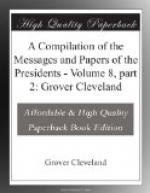At a later period it is true that, in disregard of the more comprehensive definition of navigability afforded by that act of Congress, it was for a time held by many that the rule established for England was to be received in the United States, the effect of which was to exclude from the jurisdiction of the General Government not only the waters of the Mississippi, but also those of the Great Lakes. To this construction it was with truth objected that, in so far as concerns the lakes, they are in fact seas, although of freshwater; that they are the natural marine communications between a series of populous States and between them and the possessions of a foreign nation; that they are actually navigated by ships of commerce of the largest capacity; that they had once been and might again be the scene of foreign war; and that therefore it was doing violence to all reason to undertake by means of an arbitrary doctrine of technical foreign law to exclude such waters from the jurisdiction of the General Government. In regard to the river Mississippi, it was objected that to draw a line across that river at the point of ebb and flood of tide, and say that the part below was public navigable water and the part above not, while in the latter the water was at least equally deep and navigable and its commerce as rich as in the former, with numerous ports of foreign entry and delivery, was to sanction a distinction artificial and unjust, because regardless of the real fact of navigability.
We may conceive that some such considerations led to the enactment in the year 1845 of an act in addition to that of 1789, declaring that—
The district courts of the United States shall have, possess, and exercise the same jurisdiction in matters of contract and tort arising in, upon, or concerning steamboats and other vessels of 20 tons burden and upward, enrolled and licensed for the coasting trade and at the time employed in business of commerce and navigation between ports and places in different States and Territories upon the lakes and navigable waters connecting said lakes, as is now possessed and exercised by the said courts in cases of the like steamboats and other vessels employed in navigation and commerce upon the high seas or tide waters within the admiralty and maritime jurisdiction of the United States.
It is observable that the act of 1789 applies the jurisdiction of the United States to all “waters which are navigable from the sea” for vessels of 10 tons burden, and that of 1845 extends the jurisdiction to enrolled vessels of 20 tons burden, on the lakes and navigable waters connecting said lakes, though not waters navigable from the sea, provided such vessels be employed between places in different States and Territories.




